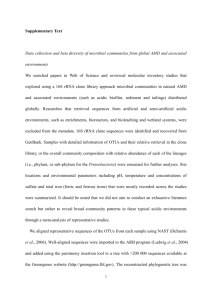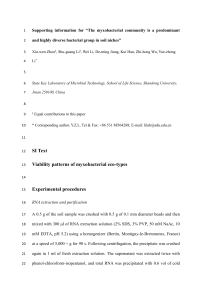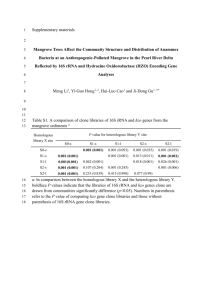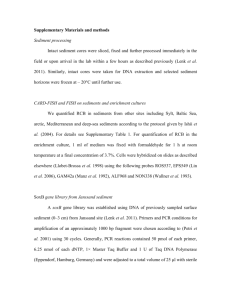emi12168-sup-0001
advertisement
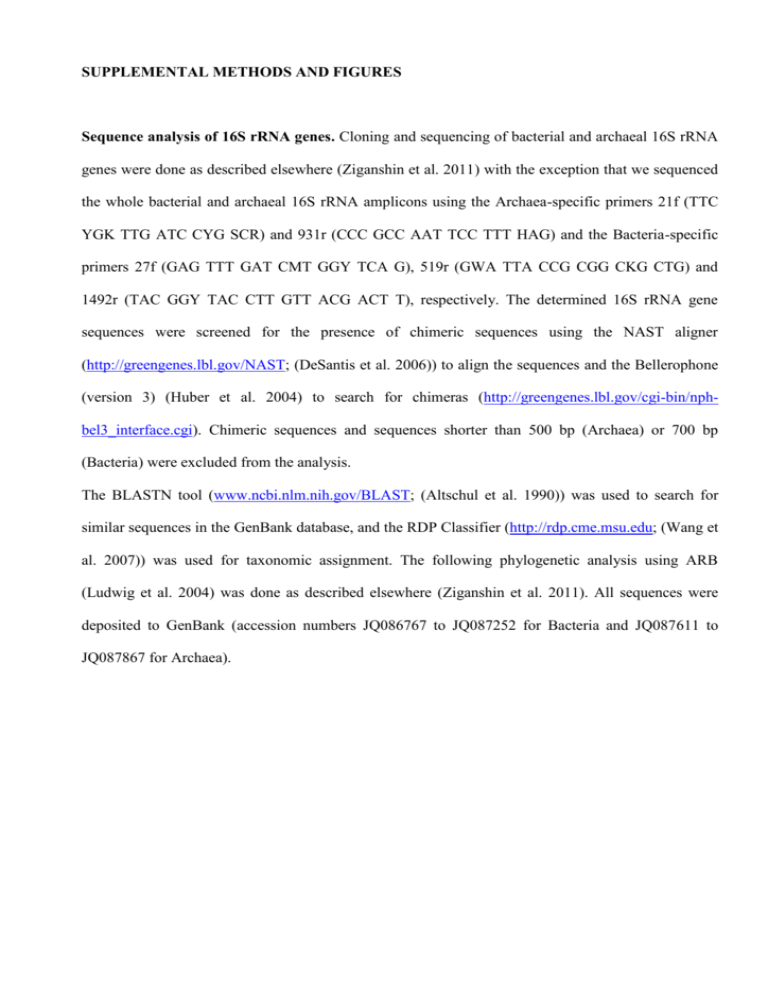
SUPPLEMENTAL METHODS AND FIGURES Sequence analysis of 16S rRNA genes. Cloning and sequencing of bacterial and archaeal 16S rRNA genes were done as described elsewhere (Ziganshin et al. 2011) with the exception that we sequenced the whole bacterial and archaeal 16S rRNA amplicons using the Archaea-specific primers 21f (TTC YGK TTG ATC CYG SCR) and 931r (CCC GCC AAT TCC TTT HAG) and the Bacteria-specific primers 27f (GAG TTT GAT CMT GGY TCA G), 519r (GWA TTA CCG CGG CKG CTG) and 1492r (TAC GGY TAC CTT GTT ACG ACT T), respectively. The determined 16S rRNA gene sequences were screened for the presence of chimeric sequences using the NAST aligner (http://greengenes.lbl.gov/NAST; (DeSantis et al. 2006)) to align the sequences and the Bellerophone (version 3) (Huber et al. 2004) to search for chimeras (http://greengenes.lbl.gov/cgi-bin/nphbel3_interface.cgi). Chimeric sequences and sequences shorter than 500 bp (Archaea) or 700 bp (Bacteria) were excluded from the analysis. The BLASTN tool (www.ncbi.nlm.nih.gov/BLAST; (Altschul et al. 1990)) was used to search for similar sequences in the GenBank database, and the RDP Classifier (http://rdp.cme.msu.edu; (Wang et al. 2007)) was used for taxonomic assignment. The following phylogenetic analysis using ARB (Ludwig et al. 2004) was done as described elsewhere (Ziganshin et al. 2011). All sequences were deposited to GenBank (accession numbers JQ086767 to JQ087252 for Bacteria and JQ087611 to JQ087867 for Archaea). Supplemental Figure 1. Phylogenetic tree of bacterial 16S rRNA gene sequences affiliated to the Clostridia and Anaerolineae. The determined partial 16S rRNA gene sequences (bold) were aligned to the SILVA SSURef database (release 102); the final positions within the tree and bootstrap values were calculated using the ARB parsimony interactive tool. Only bootstrap values >50% are shown. (Scale bar=10% nucleotide substitution) Supplemental Figure 2. Phylogenetic tree of bacterial 16S rRNA gene sequences affiliated to the Deltaproteobacteria, Betaproteobacteria and Bacteroidia. The determined partial 16S rRNA gene sequences (bold) were aligned to the SILVA SSURef database (release 102); the final positions within the tree and bootstrap values were calculated using the ARB parsimony interactive tool. Only bootstrap values >50% are shown. (Scale bar=10% nucleotide substitution) Supplemental Figure 3. Phylogenetic tree of archaeal 16S rRNA gene sequences affiliated to the Methanomicrobia and Thermoplasmata. The determined partial 16S rRNA gene sequences (bold) were aligned to the SILVA SSURef database (release 102); the final positions within the tree and bootstrap values were calculated using the ARB parsimony interactive tool. Only bootstrap values >50% are shown. (Scale bar=10% nucleotide substitution) Supplemental Figure 4. Phylogenetic tree of archaeal 16S rRNA gene sequences affiliated to the Thermoprotei. The determined partial 16S rRNA gene sequences (bold) were aligned to the SILVA SSURef database (release 102); the final positions within the tree and bootstrap values were calculated using the ARB parsimony interactive tool. Only bootstrap values >50% are shown. (Scale bar=10% nucleotide substitution) Supplemental Figure 1, Tischer et al. Supplemental Figure 2, Tischer et al. Supplemental Figure 3, Tischer et al. Supplemental Figure 4, Tischer et al. SUPPLEMENTAL REFERENCES Ludwig, W., et al. (2004), 'ARB: a software environment for sequence data', Nucleic Acids Res, 32 (4), 1363-71. Wang, Q., et al. (2007), 'Naive Bayesian classifier for rapid assignment of rRNA sequences into the new bacterial taxonomy', Appl Environ Microbiol, 73 (16), 5261-7. Ziganshin, A. M., et al. (2011), 'Bacteria and archaea involved in anaerobic digestion of distillers grains with solubles', Appl Microbiol Biotechnol, 89 (6), 2039-52.

